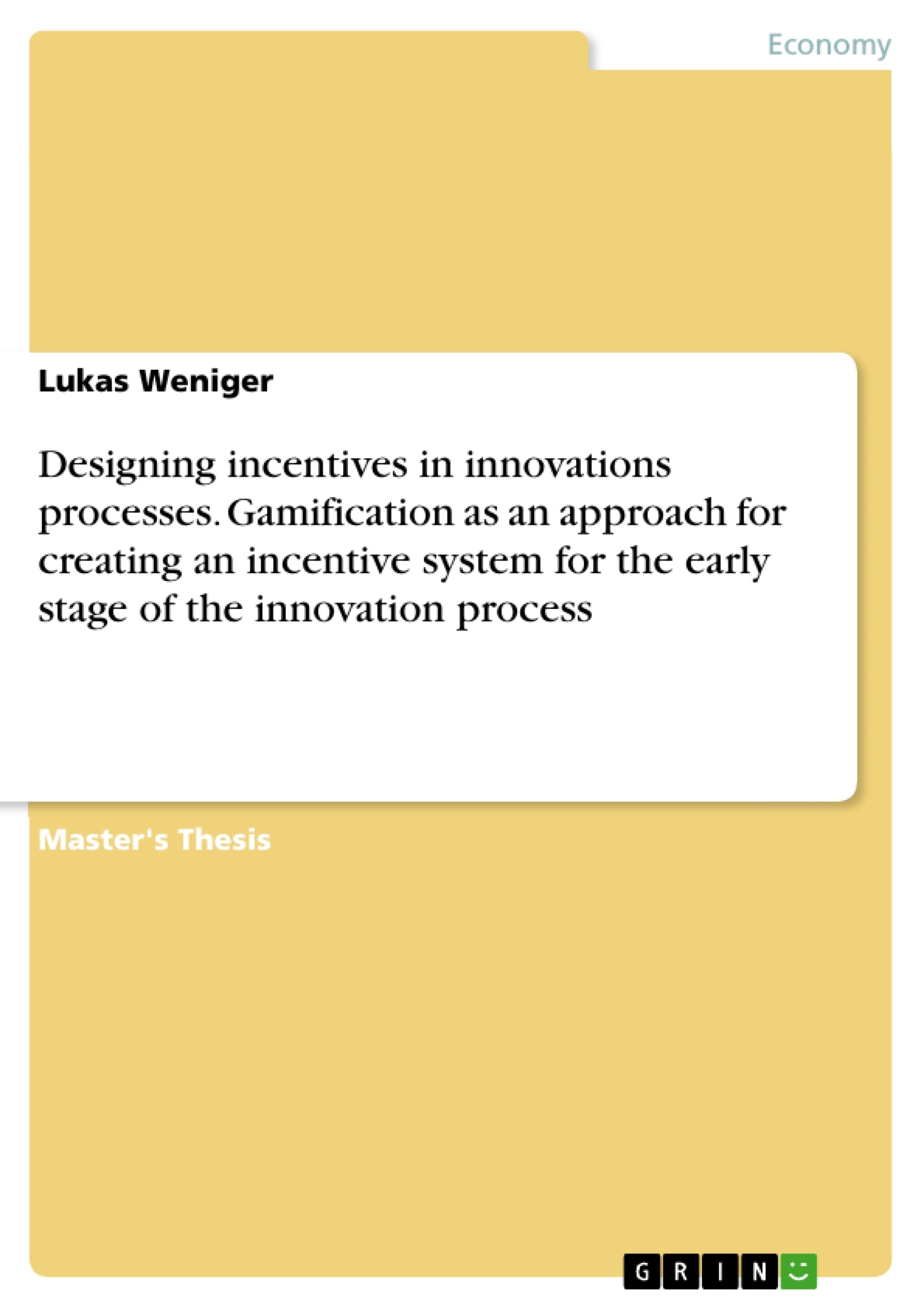Incentive systems can contribute to the best possible exploitation of the employee’s abilities. A new way of setting those incentives and motivating employees is gamification. Gamification is defined as the application of game mechanics to a non-game setting, such as the business environment. Companies have discovered game-like incentives for motivating their employees, and now, this paper tries to create a gamified incentive system for motivating employees in the early stage of the innovation process.
Innovation creates value, strengthens the market position and creates competitive advantages. Therefore innovation is widely seen as a critical source for economic success for companies. However, at the same time, innovation is expensive. For example, in 2018 alone, Apple invested as much as 14,24 billion dollars on research and development. This represented around 46% of their total operating expenses and approximately 2,6% of their total revenues. These costs are making it vital for companies to ensure the efficient use of innovation resources.
This efficiency is largely determined by the competence, creativity and motivation of the employees working in the area of in research and development (R&D). Thus, companies have to generate adequate motivation in employees to deliver their innovative ideas, obtain a patent and develop the patentable idea into profitable innovation. Human resource (HR) management practices are considered as an essential instrument to fulfil this task.
However, standard pay-for-performance schemes, which only reward short-term financial success, are not suitable for fulfilling this task in the innovation process, because innovation processes are likely to fail as they contain a high degree of uncertainty. In standard schemes, this failure would result in penalties by a lower compensation or a possible termination of the contract. This punishment has the potential to harm the innovative behaviour of employees. A company that wants to encourage innovation must design incentive systems that free employees to take risks, experiments and discover what practices and technologies are the most effective.
These unique characteristics of innovation processes are the reason why analysing incentive systems in the context of innovation processes is of particular interest. Especially since incentive systems are considered as essential for ensuring the efficiency of innovation processes, as employees adapt their behaviour to these systems.
Inhaltsverzeichnis (Table of Contents)
- 1. Introduction
- 1.1 Motivation
- 1.2 Structure and method
- 2. The problem of incentives in innovation processes
- 2.1 Identification of innovation processes
- 2.1.1 Overview of innovation
- 2.1.2 Typical stages in innovation processes
- 2.2 Incentive systems in innovation processes
- 2.2.1 Preference deficits: Principal-agent theory
- 2.2.2 Basic requirements of incentive systems
- 2.3 Incentive relevant characteristics of innovation processes
- 2.3.1 Motivational structures
- 2.3.2 Creativity
- 2.3.3 Teamwork
- 2.3.4 Measuring performance
- 3. The gamified incentive system for the early stage of the innovation process
- 3.1 Play
- 3.2 Game mechanics
- 3.3 Game mechanics and play in incentive systems for innovation processes
- 3.3.1 Basic requirements
- 3.3.2 Innovation process requirements
- 4. Research design and methods
- 4.1 Data collection
- 4.1.1 Quasi-experiment – The gamified incentive system
- 4.1.2 Survey
- 4.1.3 Interview
- 4.2 Data analysis, findings and interpretation
- 4.3 Research limitations
- 5. Conclusion
Zielsetzung und Themenschwerpunkte (Objectives and Key Themes)
This master thesis explores the use of gamification as an incentive system for the early stages of the innovation process. It investigates the potential of gamification to address the challenges of motivating individuals and teams in innovative environments.
- The challenges of incentivizing innovation
- The application of game mechanics in incentive systems
- The effectiveness of gamified incentives in the early stages of the innovation process
- Research methodology and data analysis
- Limitations and future research directions
Zusammenfassung der Kapitel (Chapter Summaries)
- Chapter 1 introduces the topic of gamification in innovation processes and outlines the motivation and structure of the thesis. It highlights the need for effective incentive systems in innovation and explores the potential of gamification as a solution.
- Chapter 2 analyzes the challenges of designing incentive systems for innovation processes. It examines the concept of preference deficits, the basic requirements of incentive systems, and the specific characteristics of innovation processes that influence the design of effective incentives.
- Chapter 3 delves into the theoretical framework of gamification, exploring the concepts of "play" and "game mechanics." It analyzes how these concepts can be applied to create an incentive system for the early stage of the innovation process.
- Chapter 4 describes the research methodology employed in the thesis. This includes the data collection methods, such as a quasi-experiment, survey, and interviews, as well as the data analysis techniques used to interpret the findings.
Schlüsselwörter (Keywords)
The main focus of this thesis is on gamification, incentive systems, innovation processes, early stage innovation, game mechanics, play, research methodology, and data analysis. The research examines the effectiveness of using game mechanics to motivate individuals and teams in the early stages of the innovation process.
- Citation du texte
- Lukas Weniger (Auteur), 2019, Designing incentives in innovations processes. Gamification as an approach for creating an incentive system for the early stage of the innovation process, Munich, GRIN Verlag, https://www.grin.com/document/535508



